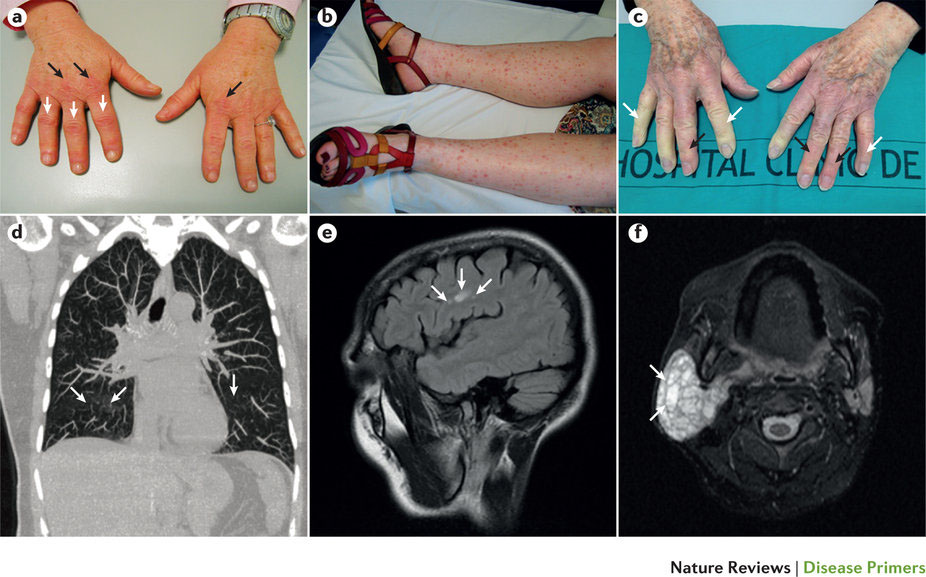シェーグレン症候群
Sjögren syndrome
2016年7月7日 Nature Reviews Disease Primers Article number: 16047 (2016) doi: 10.1038/nrdp.2016.47

シェーグレン症候群(SjS)は外分泌腺(主に唾液腺と涙腺)が主要な標的となる全身性自己免疫疾患で、主に目と口の粘膜表面に重度の乾燥が生じる。SjSは中年女性に好発するが、小児をはじめ、男性や高齢者にも認められる。SjSの臨床症状は多様であり、乾燥症状から全身性疾患(罹患組織の上皮周囲へのリンパ球浸潤あるいは免疫複合体の沈着を特徴とする)やリンパ腫まで、さまざまな症状が現れる。SjSの発症機構は、自己抗原であるRo/SSAやLa/SSBなどに対して異常なB細胞およびT細胞が反応して生じる外分泌腺上皮の破壊と考えられる。SjSの診断基準には、患者血清中の自己抗体の検出ならびに唾液腺組織生検の組織学的所見が含まれる。SjSの治療方法としては、乾燥と全身症状の管理を目的とした局所治療と全身治療の両方が行われる。SjSは、主に全身性合併症、また一部の患者ではリンパ腫の発症が関連する高い死亡率を伴う重症疾患である。SjSの理解は十分に深化しているが、現在も、乾燥症状、全身性合併症、外分泌腺へのリンパ球浸潤、抗Ro/SSAおよび抗La/SSB自己抗体の存在、およびリンパ腫の発症リスクの増加がこの疾患の特徴となっている。
PrimeView
シェーグレン症候群(SjS)は、乾燥症状の発症、また、一部の患者では全身性疾患を特徴とする自己免疫疾患である。このPrimeViewでは、SjSの疾病原因的機構について取りまとめ、本疾患の疫学、診断および管理について解説する。
本Primerの図解サマリー

